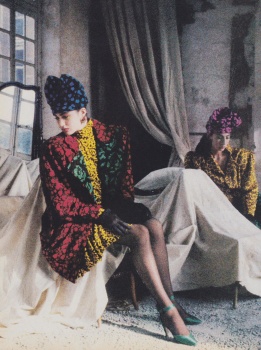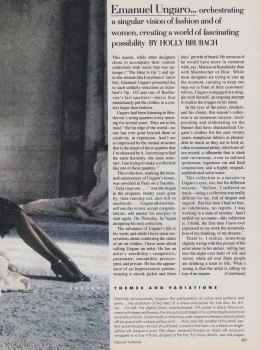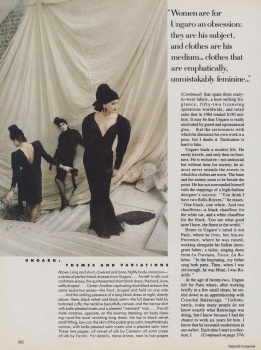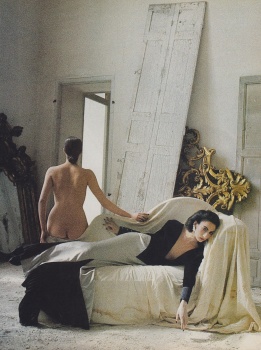In Turbeville's case she had transgressed simply by attempting to do what fashion photographers for Vogue were supposed to. 'Mr Liberman (Alexander, the creative director of Conde Nast then the art director of American Vogue) had asked me to do some swimsuits. It must have been my third year as a photographer. He said, 'You can handle groups of people. Take five girls. Make the pictures very strong.' We were supposed to shoot them in Peru, but there were problems there, so he said, 'Do it in the studio, make a set, do it in New York'.
'I'd always been interested in old bath-houses and I found this one that was closed and condemned and did the pictures there. I didn't expect them to cause trouble. But I guess when Mr Liberman and the people at Vogue saw them, I suppose there was something strange. They were kind of dreary . . . I think the thing was, people just coudn't imagine why, why you'd do it there, like that.'
The picture she's talking about is one of the most famous fashion photographs of the last 50 years. Five Twiggy-era girls with Biba made-up faces (two blondes, two brunettes, one black girl) are posed laconically around a damp-tiled chamber with enormous old-fashioned metal sluice taps fixed to the wall at waist height. Two girls are on the floor, one looking distinctly stoned; the central figure is reaching up, her hands stretched over her head as if hanging from a bar just cropped from the top of the picture, her legs splayed wide pushing her groin suggestively forward.
Turbeville swears innocence, but, as she told Martin Harrison, for Appearances, his book about fashion photography published in 1991: 'People started talking about Auschwitz and lesbians and drugs. And all I was doing was trying to design five figures in space.'


 RIP, she was a great talent! She has an amazing collection of work she has left behind for others to enjoy.
RIP, she was a great talent! She has an amazing collection of work she has left behind for others to enjoy.




















































































